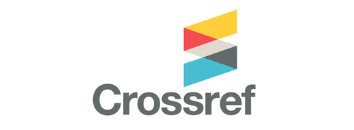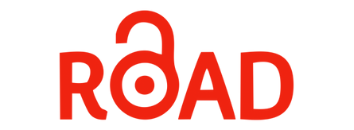THE USE OF CONJOINT ANALYSIS IN STRATEGIC DECISION MAKING: AN INITIAL STUDY
DOI:
https://doi.org/10.24002/kinerja.v22i1.1399Abstract
In an environment where change often comes through crises, disruptions and discontinuities, strategic decision making cannot be based on simple extrapolations of current situation. A firm can respond to crisis in variety of ways through strategy implementation, such as turnaround strategy, liquidation strategy, and end-games strategy which have different attributes. This initial study, focusing on Magister Management students as respondents, seeks to examine what strategy attributes and combination of strategy attributes are important to consider strategy implementation in crisis. To produce the combination of strategy attributes that effect respondent’s decision making to choose a strategy in crisis, conjoint analysis is used in this study. The result shows the combination of strategy attributes such as risk, benefit, and policy are importants in affecting respondent’s decision to implement strategy in crisis. Based on the statistical analysis, turnaround strategy which is reprenseted as reorganizational policy is the most preffered strategy to respon organizational crisis.
References
Abele, S., Bless, H., & Ehrhart, K-M., 2004. Social information processing in strategic decision-making: Why timing matters. Organizational Behaviour and Human Decision Processes, 93, 28-46.
Alba, J.W. and J.W. Hutchinson, 1987. Dimensions of Consumer Expertise. Journal of Consumer Research, 13, 411-454.
Anatan, L., 2012. Aplikasi Analisis Konjoin Dalam Pembuatan Keputusan Strategik Pada Kondisi Krisis. Working Paper-Research Issues in Strategic Management, Universitas Gadjah Mada Yogyakarta.
Arnould, E., l. Price, and G. Zinkhan., 2004. Consumers. Boston: McGraw-Hill/Irwin.
Aragón-Correa, J.A. & Sharma, S., 2003. A Contingent Resource-Based View of Proactive Corporate Environmental Strategy. Academy of Management Review, 28(1), pp.71-88.
Bazerman, M. H., 2002. Judgment in Managerial Decision Making (5th ed.) New York: John Wiley & Sons.
Benson, L. and Beach, L. R., 1996. The effects of time constraints on the pre-choice screening of decision options. Organizational Behavior and Human Decision Processes, 67, 222-228.
Bettman, James R. and Pradeep Kakkar, 1977. Effects of Information Presentation Format on Consumer Information Acquisition Strategies. Journal of Consumer Research, 3 (March), 233-40.
Bettman, J.R., Luce, M.F., and Payne, J., 1998. Constructive consumer choice processes. Journal of Consumer Research, 25 (3), 187-217.
Bettman, J.R., Park, C.W., 1980. Effect of prior knowledge and experience and phase of choice process on customer decision process: a protocol analysis. Journal of Consumer Research, 7, 234-238.
Bowen, E. H. and Helfat, C. E., 2001. Does Corporate Strategy Matter? Strategic Management Journal, Vol. 22, pp. 1-23.
Burns, A., & Harrison, M. C., 1979. A test of the reliability of psychographics. Journal of Marketing Research, 26(1), 32–38. doi:10.2307/3150871.
Eisenhardt, K.M., 1989. Building Theories from Case Study Research. The Academy of Management Review, 14 (4), 532-550.
Flannery, B. L. and D. R. May, 2000. An Empirical Study of the Effect of Moral Intensity on Environmental Ethical Decision-Making. Academy of Management Journal, 43, 642–662.
Fredrickson, J. W., & Mitchell, T. R. 1984. Strategic decision processes: Comprehensiveness and performance in an industry with an unstable environment. Academy of Management Journal, 27: 399–423.
Forte, M., Hoffman, J.J., Lamont B.T. and Brockmann, E.N., 2000. Organizational Form and Environment: An Analysis of Between-Form and Within-Form Responses to Environmental Change, Strategic Management Journal, Vol. 21, pp. 753-773.
Goll, I. and A. M. A. Rasheed, 1997. ‘Rational Decision- Making and Firm Performance: The Moderating Role of Environment’, Strategic Management Journal, 18(7), pp. 583–591.
Gudono, 2011. Analisis Data Multivariat. BPFE Yogyakarta.
Gu Seo, M., Barret, L.F., 2007. Being emotional during decision making—good or bad? An empirical investigation. Academy of Management Journal, 50 (4), 923-940.
Hambrick, D.C., Schecter, S.M., 1983. Turnaround Strategies for Mature Industrial-Product Business Units. Academy of Management Journal. 26 (2), 231-248
Harrigan, K.R., Porter, M.E., 2001. End-Game Strategies For Declining Industries, Third New International Dictionary, 111-120.
Hitt, M.A., Ireland, R.D. & Hoskisson, R.E., 2001. Strategic Management: Competitiveness and Globalization (4th Ed.). Mason, OH: South Western Publishing.
Jackson, J. W., 1993. Realistic group conflict theory: A review and evaluation of the theoretical and empirical literature, Psychological Record, 43-395-413
Kuncoro, M., 2006. Strategi: Bagaimana Meraih keunggulan kompetitif. Penerbit AErlangga, Jakarta.
Kyle, A.S., On-Yang, H., Xiong, W., 2006. Prospect Theory and Liquidation decisions. Journal of Economics Theory, 139, 273-288.
Laplante, P. A., Costello, T., Singh, P. Bindiganavile, S. and Landon M., 2004. The Who, What, Why, Where, and When of IT Outsourcing, IT Pro, Feb. 1, 2003, pp. 19-23.
Lohrke, F.T., Bedeian, A.G., Pal,er, T.B., 2004. The role of top management teams in formulating and implementing turnarounds strategies: a review and research agenda. International Journal of Management Review, 5/6 (2), 63-90
Mintzberg H., 1975. The manager'sjob: Folklore and fact. Harvard Business Review, 53(4)
Mintzberg, H., 1981. ‘What is Planning Anyway?’ Strategic Management Journal, 2, pp. 319-324.
Nutt, P.C., 1992. Formulation tactics and the success of organizational decision making. Decision Science, 23, 519-540
Parameswaran, R. et al. ,1979. Measuring reliability: a comparion of alternative techniques. Journal of Marketing Research, v. 16, n. 1, p. 18-25, Febr.
Pedhazur, E. J. & Schmelkin, L. P. (1991). Measurement, design, and analysis: An integrated approach. Hillsdale, NJ: Lawrence Erlbaum Associates, Inc.
Pettigrew, A., 2003. Strategy as Process, Power and Change. In Cummings, S. & Wilson, D. (Eds.) Images of Strategy. Blackwell Publishing.
Pettigrew, A. M. and McNulty, T., 1995. Power and influence in and around the boardroom. Human Relations, 48(8), 845-873.
Rotaris, L., 2000. Innovation Strategies and Conjoint Analysis. Working Paper.
Schendel D, Hofer CW., 1979. Strategic Management: A New View of Business Policy and Planning. Little Brown: Boston, MA.
Shrader, C., Blackburn, V. and Iles, P. (1997) Women in Management and Firm Financial Performance: An Exploratory Study, Journal of Managerial Issues, 9, 355–372.
Simonson , I., and Amos Tversky (1992), “Choice in Context: Trade-off Contrast and Extremeness Aversion,” Journal of Marketing Research, 29 (August), 281–95.
Singh, J. (1986). Performance, slack, and risk taking in organizational decision making. Academy of Management Journal, 29, 562-585.
Smith, M. & Graves, C. 2005. Corporate turnaround and financial distress. Managerial Auditing Journal. 20(3), 304–320.
Sommer, A., & Pearson, C. M. (2007). Antecedents of creative decision making in organizational crisis: A team-based simulation. Technological Forecasting and Social Change: An International Journal, 74, 1234-1251.
Staw, B.M., Sandelands, L.E., Dutton, J.E., 1981. Threat-rigidity e€ects in organizational behavior: a multilevel analysis. Administrative Science Quarterly 26 (4), 501±524.
Thomas, H., 1984. Strategic Decision Analysis: Applied Decision Analysis and its role in the strategic management process. Strategic Management Journal, 5, 139-156.
Thompson, Craig J. and Maura Troester (2002), “Consumer Value Systems in the Age of Postmodern Fragmentation: The Case of the Natural Health Microculture,” Journal of Consumer Research, 28(4), 550.
Zajac EJ, Kraatz MS, Bresser RKF. 2000. Modeling the dynamics of strategic fit: A normative approach to strategic change. Strategic Management Journal 21(4): 429-453.














